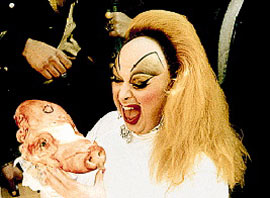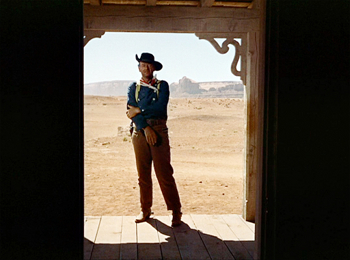
he death penalty does not deter crime.[ref]Death Penalty Information Center[/ref] Most of the rest of the industrialized world understands this.[ref]Wikipedia: Use of capital punishment by country[/ref]
This seems at first to be counterintuitive; you’d think the threat of death would be a pretty powerful manipulator of human behavior. I mean, think of the standard movie scene, where one character holds another at gunpoint, or hanging by his heels out an upper story window: the party of the second part is generally depicted as pretty eager to do whatever the party of the first part asks. So would we, we imagine, in similar situations.
 But to someone het up enough to kill another person, the threat of capital punishment is not remotely like a cocked and loaded gun to the head. The latter would have a pretty calming effect, no question. But think about it: if you’re in an emotional state where you’re ready to kill someone, you’re not really in a state of mind to stop and weigh your options and consider the consequences. For two reasons: not only are you just not in the headspace to think analytically when you’re ready to stab someone in the neck, but also because you would assume—you would at least hope—that you might get away with it. To the extent that you’re even going to think about possible penalties, at that moment they might seem to be avoidable. Certainly remote. Even if that’s not likely, why should crime and punishment be the one area of human life entirely free from denial and self-delusion?
But to someone het up enough to kill another person, the threat of capital punishment is not remotely like a cocked and loaded gun to the head. The latter would have a pretty calming effect, no question. But think about it: if you’re in an emotional state where you’re ready to kill someone, you’re not really in a state of mind to stop and weigh your options and consider the consequences. For two reasons: not only are you just not in the headspace to think analytically when you’re ready to stab someone in the neck, but also because you would assume—you would at least hope—that you might get away with it. To the extent that you’re even going to think about possible penalties, at that moment they might seem to be avoidable. Certainly remote. Even if that’s not likely, why should crime and punishment be the one area of human life entirely free from denial and self-delusion?
It could even be argued that if you are in a state or country that practices capital punishment, that very fact might not only seem to diminish the value of human life, it could also suggest that what you are doing—killing someone for a perceived offense—is the way of the world, and thus you have the moral right to practice your own version of this style of justice. (cf. Dexter)
When you take state-sponsored homicide as a response to criminal actions, and consider it in the context of human behavior, the assumption that capital punishment must surely be a deterrent starts to feel a little shaky. And thus we see a possible explanation for the statistical findings that consistently indicate that capital punishment, despite George W. Bush’s gut feeling that it must be, is not in fact a deterrence against violent crime.
![]()
So why do most Americans still feel that it’s justified? Why does the “narrative” that we form in our minds when we hear about a heinous crime only feel complete and satisfying when it ends with the death of the criminal?
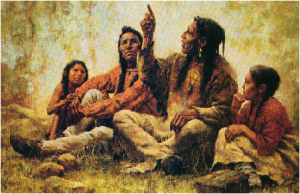 We live our inner lives by narrative. It’s the way we find sense in the things around us, in ourselves and our experiences. We convince ourselves we have control over our lives when we feel like we understand those experiences in terms of cause and effect; beginning, middle, and end. It’s how we contain the universe in our mind, the infinite within the finite: by breaking it up into conceivable wholes.
We live our inner lives by narrative. It’s the way we find sense in the things around us, in ourselves and our experiences. We convince ourselves we have control over our lives when we feel like we understand those experiences in terms of cause and effect; beginning, middle, and end. It’s how we contain the universe in our mind, the infinite within the finite: by breaking it up into conceivable wholes.
We learn the models for these inner narratives from the narratives that permeate our daily lives. Our inner narratives reflect the narratives of the society we live in. We are conditioned, in other words, to expect the narratives which we impose upon the disordered world around us to conform to the general structure of the narratives we have learned from the stories we have heard, whether told to us at bed time, read in a book or newspaper, or seen in a movie.
For many cultures, and for many centuries, these narrative armatures on which we hang our own perceptions and experiences in order to give them an understandable shape, were supplied by religion, in the form of stories, songs, and texts. Christians, for example, become familiar from early age with the parable, a form of story whose explicit purpose is to symbolically portray a specific moral idea. All religions hold one thing in common: each religion is primarily a narrative, a structure imposed upon things we don’t understand.
In modern society, we are surrounded by narratives. Every news item, every commercial, every reality show, and certainly more traditional media like books and movies, supply us with a neverending supply of narrative models for us to absorb, and through which we continue to expand our understanding of our experience.
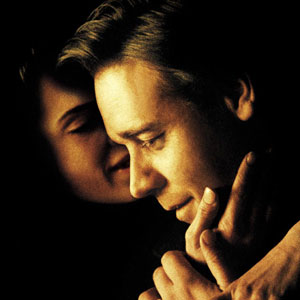
A Beautiful Lie
For much of the 20th century movies held a prominent place in the American Narrative. To a large degree, the product of Hollywood has been a mirror, in which we portray ourselves as we believe ourselves to be, and through which we learn the models and narratives that make our world seem understandable.
As a mirror, however, Hollywood has flaws, which warp and distort the image it reflects back to us. In the mirror of American movies, good guys win, bad guys lose.[ref]Looking at some of these flaws more closely, we may even learn that women are peripheral to men, Middle Easterners are terrorists, and evil people have English accents.[/ref] Indeed, while the rest of world cinema has been largely free (with notable exceptions, e.g. Soviet cinema) to make movies reflecting their respective views of the world, warts and all, the flaws in the mirror were mandated in America: if a filmmaker expected to get his movie distributed, he was obliged to include these flaws in our view of ourselves, and to exclude any reflection of weakness, warts, and to a great extent, women.
![]()
In 1922, to lessen the likelihood of local exhibitors’ chopping up reels of film in order to cut out the parts they found offensive, Hollywood took it upon itself to preemptively censor its own output. The phenomenon of the “stardom” of an individual was a relatively new one, and the fact that the characters people saw on the silver screen had real life counterparts—real people, with private lives of varying degrees of propriety and degeneracy—created a dichotomy of real life versus fantasy that could, and did, spread waves of outrage (and titillation) among the moviegoing public. This sense of indecency lurking (and winking) behind the veil of studio-fabricated publicity stories and bios, along with what some people saw as an increase in the treatment of unsavory subjects on the screen itself, got under the skin of provincials across the country: the first offenderati.

Fatty Arbuckle: the death of an actress destroyed his career
In 1930, in the wake of the Supreme Court decision of Mutual Film Corporation v. Industrial Commission of Ohio, which found that movies were commercial speech and thus not protected by the First Amendment, the Hollywood studios collectively installed a former postmaster named Will Hays in what came to be known as the Hays Office. The stated purpose of the Hays Office was to review and approve the scripts of all movies prior to production, thus showing the world and its small towns that Hollywood cared as much about decency as any godfearing churchgoer. The Hays Code, or list of “Don’ts and Be Carefuls,” included such no-no’s as the portrayal of miscegenation, ridicule of the clergy, and “offense to any race, nation, or creed.”[ref]This last item is often blamed for Hollywood’s apparent reticence to criticize Hitler in the years leading up to WWII.[/ref]
In the early years of its existence, the Hays Code remained a piece of Hollywood theater: Hays gabe lots of speeches about decency, while his office winked at any but the most egregious flouting of the Code’s commandments.
But when one of the unwritten commandments—that women were to be portrayed as subservient to men, and their individual lives of less import than the mandate of marriage and legitimate procreation—was continually broken, during a kind of golden age of strong female roles as doctors, divorcees, CEOs, and single mothers, well, that was NOT to be tolerated. So of course the Catholic Church stepped in. (Plus c’est la même chose, n’est-ce pas?)
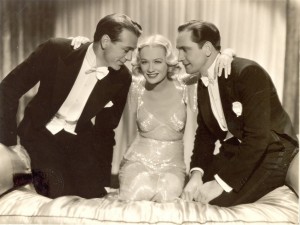
Design for Living (1933): She can’t decide, so she chooses both men
A couple of Catholics, including a priest (a bishop or two would become involved later, behind the scenes), created a new Code. This code went further than the previous one: in addition to insisting upon specific exclusions, it also mandated the inclusion of certain moral absolutes. In order to receive the Hays Office stamp of approval, any woman who rejected married family life must be seen to be punished, either by the hand of man or of God, and any person who committed a crime must be subject to justice, and receive a punishment appropriate to his crime.
As a result of these moralistic dictates, the overwhelming majority of the movies produced by Hollywood during its heyday[ref]Roughly 1934, when the code grew teeth under the stewardship of Joseph Breen, to 1967, when the it was replaced with the ratings system still in use today.[/ref]—an output which was to have an inestimable impact on the culture of America and to a great extent much of the rest of the world—reinforced the idea that loneliness, disease, or death just was desserts for any woman who rejected traditional marriage, and that the life of anyone who committed a crime was only to be considered whole and justified if it was ended on screen, either by the hand of man (execution) or of God (any other death).
This was the “tyranny of the happy ending” that drove Douglas Sirk from Hollywood. Death by execution may not seem like a very happy ending, but in the eyes of the enforcers of the Code, it represented a happy ending for traditional morality. Justice is done and all’s right with the world.[ref]One of my favorite films is Fritz Lang’s Scarlet Street. Scarlet Street is the exceedingly rare exception to this rule. In it a man is executed for a crime he did not commit, leaving the actual culprit alive—though probably insane. This was explicitly against the letter of the Code. Fritz squeaked it by the censors, I think, by making the wrongly executed man as vile and degenerate as possible: he was everything BUT a murderer.[/ref]
That a sense of the inevitability and even divinity of death as a valid, even necessary, result of wrongdoing was the basis of virtually 100% of the narratives that Americans absorbed in the glowing movie temples of Hollywood’s Golden Age suggests to me one possible reason for our majority support of capital punishment in this country. Death is the ending that feels satisfying to many of us when we consider the narrative of a criminal and his crimes. Final and often divine punishment as the appropriate ending for anyone who breaks society’s rules is practically the only narrative model we’ve been fed by our culture.
NOTE: a version of this article was first published at blog.indieflix.com


